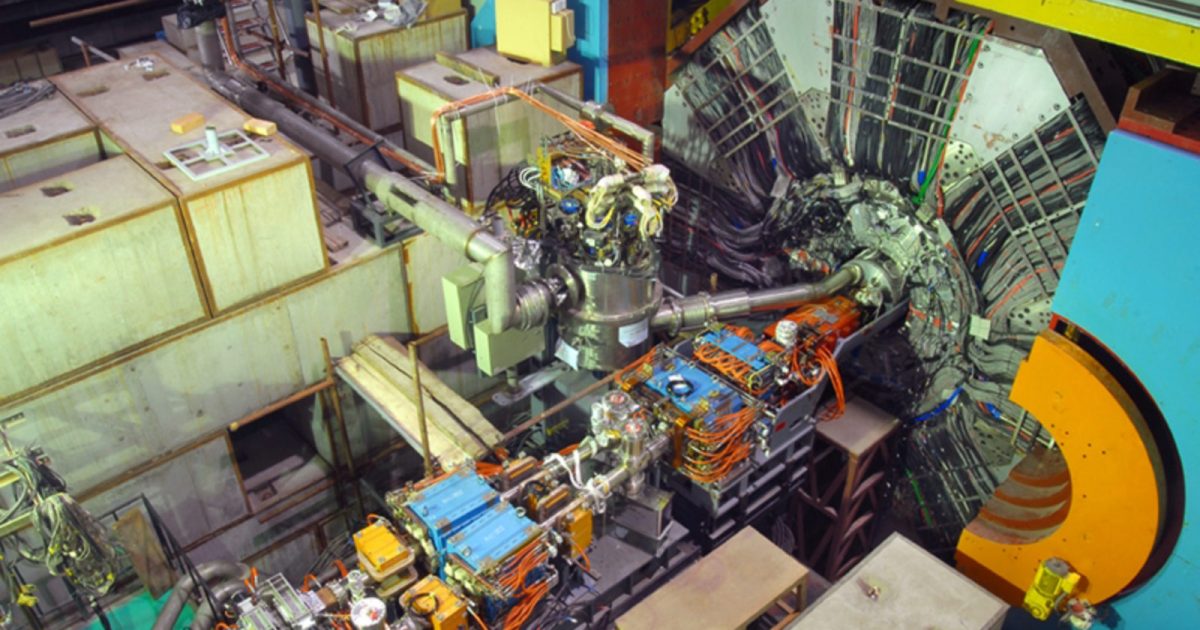"In theory, at least according to quantum chromodynamics (our theory of the strong nuclear force), there should be multiple ways to make a bound state of quarks, antiquarks, and/or gluons alone."
"You can have baryons (with 3 quarks each) or antibaryons (with 3 antiquarks each)."
"You can have mesons (with a quark-antiquark pair)."
"You can have exotic states like tetraquarks (2 quarks and 2 antiquarks), pentaquarks (4 quarks and 1 antiquark or 1 quark and 4 antiquarks), or hexaquarks (6 quarks, 3 quarks and 3 antiquarks, or 6 antiquarks), etc."
"Or, you can also have states made of gluons alone -- with no valence quarks or antiquarks -- known as glueballs."
Just to joggle your memory, in the Standard Model, protons and neutrons are made of quarks. Electrons aren't made of quarks -- they aren't made of anything, they're their own elementary particle. Particles made of quarks are called hadrons. There's this big machine called the Large Hadron Collider (maybe you have heard of it?) that collides hadrons together -- usually protons, because they are easy to accelerate with magnetic fields. Protons and neutrons are also baryons, which appears in the list above, which have 3 quarks and combine in certain ways dictated by "quantum numbers".
This raises the question of what glues quarks together into larger particles? The Standard Model answer is another particle -- gluons. Gluons carry the so-called "strong force". The subfield of physics for studying the interactions of quarks and gluons is called quantum chromodynamics, because for some reason, physicists decided to name properties of quarks that govern how they interact "color", even though this has nothing to do with actual color, the kind you see with your eyes, because quarks are vastly smaller than the smallest wavelength of light that your eyes can see and therefore don't have any color. (The smallest wavelength of light your eyes can see is about 400 nanometers. The diameter of a proton is about 0.84 femtometers. Remember, your metric prefixes go milli-, micro-, nano-, pico-, femto-, each 1000x smaller than the previous. So protons are about 470 million times smaller than the smallest wavelength of light your eyes can see. As protons are made of quarks, quarks must be smaller still.) They called other properties of quarks "flavors". If you haven't realized by now scientists give weird names to everything, maybe now is the time.
Anyway, based on this, you might not think it's possible to make a particle composed only of gluons. But not only is that what these physicists are claiming to have spotted, but they came up with the most obvious possible name for it, the "glueball".
This wasn't at the Large Hadron Collider (LHC), though, this was at an electron-positron collider in Beijing known as Beijing Spectrometer III (BES III). ("Positrons" are anti-matter electrons.)
"In a radical new paper just published in the journal Physical Review Letters, the BES III collaboration just announced that an exotic particle, previously identified as the X(2370), may indeed be the lightest glueball predicted by the Standard Model."
The article goes on to describe a technique called "Lattice QCD".
"By treating spacetime as a discrete grid with a very small inherent spacing, we can make predictions for larger-scale phenomena: the confinement of QCD bound states, the conditions under which a quark-gluon plasma should arise, and even a prediction for the masses of various bound states, including not only the proton and neutron, but heavy and exotic bound states as well."
This is not a theory of physics, suggesting that space and matter are discrete on small enough scales -- there is such a theory and the scale is known as the Planck length -- it's another, well, to get from our proton diameter down to the Planck length, we'd need to keep going from femto- down 7 more metric prefixes. Anyway, no, that's not what this is about. The "Lattice" in "Lattice QCD" is a numerical approximation technique. As the spacing between lattice sites approaches zero, this approximation method approaches the values predicted by the QCD theory, which uses continuous rather than discrete mathematics.
New particle at last! Physicists detect the first "glueball"
